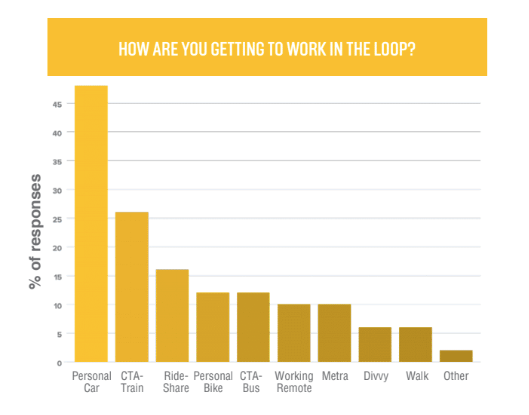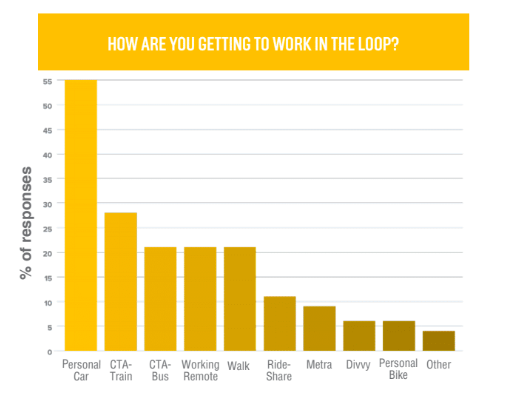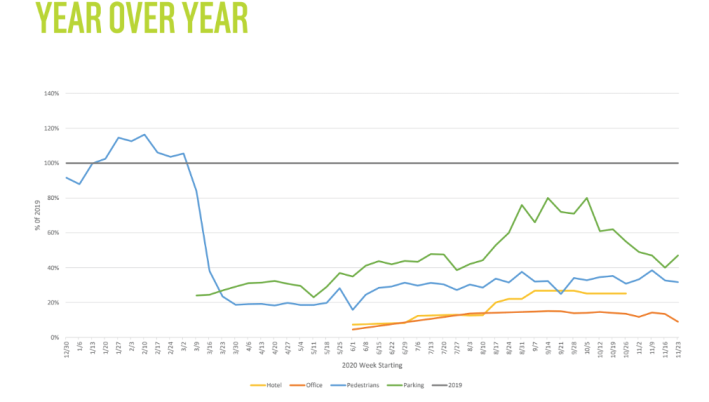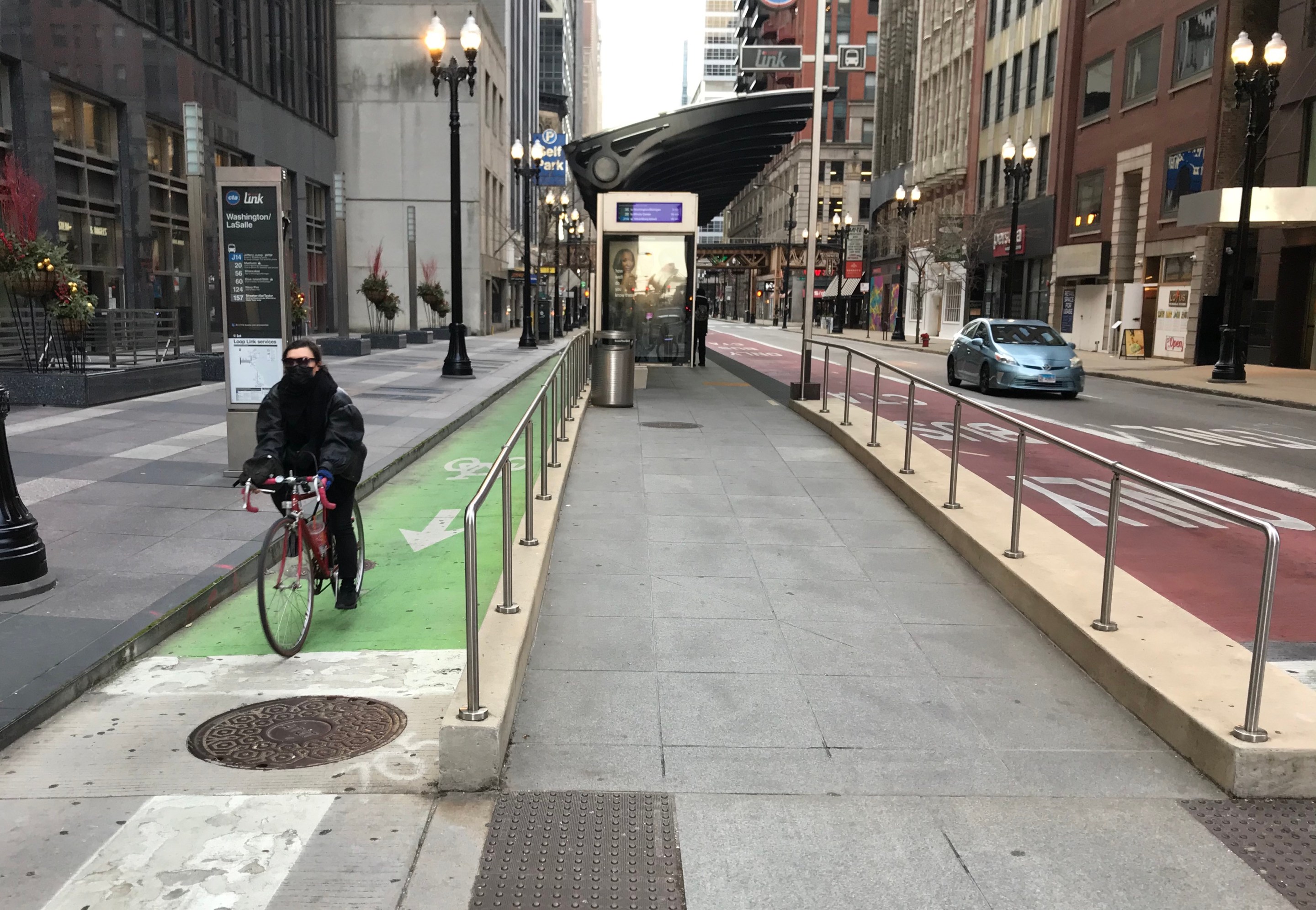Since September Streetsblog Chicago has been following economic recovery reports released monthly by the Chicago Loop Alliance, which aggregate data from pedestrian counters, parking spot occupancy, and Loop Alliance member surveys to track how many people are coming to the Loop during the pandemic, for what purposes, and how they’re getting there.
The September report showed a massive spike in parking rates compared to foot traffic, office occupancy and public transportation ridership, which remained quite low compared to the same time the prior year. That indicated that we might see a dangerous spike in driving above pre-pandemic levels as restrictions lifted.
The October study showed a gradual but promising return to CTA and bicycle commuting. However, personal cars remained the most common way survey respondents said they were getting to work.

Unsurprisingly, the tragic second surge of COVID-19 cases in the late fall and the associated drop in business activity led to an overall reduction in downtown commuting in November. That also might be the reason for the shrinking sample size of survey respondents, down to only 48 this month, nearly half the number from September.
The November report shows parking rates continued to trend steeply downward through most of the month, paralleling the downturn in office occupancy. Those who reported working from home doubled from 10 to 20 percent.

For those still traveling to the Loop, commute modes followed an expected shift with the weather. The percent of respondents who said they used a personal bike to get to work dropped by about half, while the CTA bus ridership percentage nearly doubled.
Interestingly, the percent of people who said they walked to work spiked from just over 5 percent in October to over 20 percent in November. Personal car use remained the most popular mode, used by about 55 percent of respondents.
The numbers—and logic—suggest a portion of workers who were biking to the Loop switched to taking the bus or bundling up and walking as temperatures dropped, while those who drove to work continued to do so. More people switched back to working from home, presumably across transportation modes.

Question remains. As Chicagoans are inoculated against the virus and recovery begins in earnest, how quickly will car-owning commuters to the Loop wean themselves from their personal vehicles and go back to riding public transportation? And will people returning to offices after working from home jump back on the CTA or will they drive instead, increasing the chances of carmageddon?
If the city of Chicago is serious about avoiding this carpocalypse, they're take more steps to make it easier to safely walk, bike, and ride transit to the loop, such as installing more pop-up bus lanes, as well as pandemic bike lanes.




